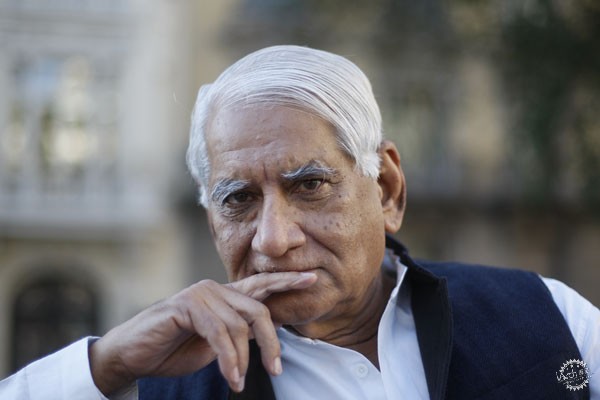
Architecture as an Agent of Change: Remembering Charles Correa, "India's Greatest Architect"
由专筑网周韦博,刘庆新编译
一年前(2015年6月16日),建筑家庭永远失去了查理斯•柯里亚。他被称作印度最伟大的建筑师,但是他在建筑环境研究方面的影响力远超国界。扎根于印度本土,柯里亚的作品结合了现代主义思潮和传统建筑形式,重新定义了印度建筑的通用形式。在他的整个建筑生涯中,他的努力为他赢得了各种大奖,包括1984年英国皇家建筑师学会金奖,1994年日本皇室世界文化大奖和2006年padmavibhushan奖(印度第二重要的公民奖)。
通过他的建筑,不论是建筑师还是亲历建筑的体验者都能感受到光与影的节奏。而这种美则来源于低调的材质、富有力量的色彩以及空间叙事性所带来的欢乐中。而我们更多能体会的是他对建筑的信念——建筑能够塑造社会,这种信念贯穿于他整个建筑设计生涯。“最重要的是,建筑应该作为时代变革的代理人,”柯里亚曾写道,“创造未来才是建筑最伟大的功能。”
A year ago today, on June 16th 2015, the architectural community lost Charles Correa (b.1930) – a man often referred to as “India’s Greatest Architect” and a person whose impact on the built environment extended far beyond his own native country. Rooted in India, Correa’s work blended Modernity and traditional vernacular styles to form architecture with a universal appeal. Over the course of his career, this work earned him—among many others—awards including the 1984 RIBA Royal Gold Medal (UK), the 1994Praemium Imperiale (Japan), and the 2006 Padma Vibhushan (India’s second highest civilian honor).
Through his buildings we, as both architects and people who experience space, have learnt about the lyrical qualities of light and shade, the beauty that can be found in humble materials, the power of color, and the joy of woven narratives in space. Perhaps more than anything else, however, it was his belief in the notion that architecture can shape society which ensures the continued relevance of his work. “At it’s most vital, architecture is an agent of change,” Correa once wrote. “To invent tomorrow – that is its finest function.”
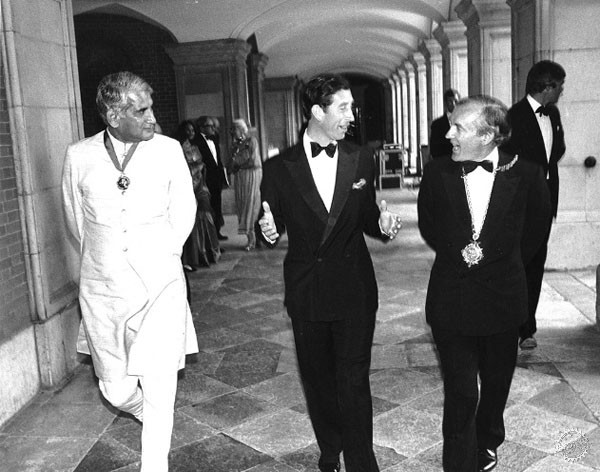
Correa following the RIBA Royal Gold Medal ceremony with Prince Charles (1984)/在英国皇家建筑师学会颁奖仪式上,柯里亚跟随着英国查尔斯王子. Image Courtesy of Charles Correa Archives
他将近50年的建筑生涯正是在践行他对建筑的这种信念。印度独立后社会经济面临巨大的变革,在这种变革的环境下,他的建筑不满足于仅仅符合业主的需求,同时在尝试着建立属于印度这个时期的建筑风格。与此同时,他对建筑的兴趣早已超出建筑艺术而进入一个更富有挑战更不可控制的领域——印度急速的城市扩展问题。
即使是在其早期的作品中,对该问题全方面的思考已经初见端倪。上世纪50年代,当柯里亚完成密歇根大学和麻省理工的学业时,他发现印度这个古老的文明正在寻找一种全新的面貌——这给了建筑设计无限的可能。在印度第一任总理Jawaharlal Nehru的领导下,建筑设计成为这个国家寻找新的国家形象的一个重要方面。通过邀请柯布西耶设计昌迪加尔,现代主义似乎成为了现代民主印度的主旋律。在整个印度充满自信和社会主义理想的大环境下,柯里亚和他同时代的印度建筑师(多西、里华尔、)能够获得充足的赞助来展现他们的天赋。然而,这些第一代现代印度建筑师并没有在西方世界寻找建筑灵感。正如尼赫鲁在他的著作《发现印度》中谈到,现代主义和传统并不完全冲突,人们应该对印度的过去存有感恩,并对印度的未来抱有希望。
Throughout his over five decade-long career, Correa’s work and writings strove to prove just that. In a large, disparate country undergoing enormous change post-independence, his buildings did not just meet the pragmatic requirements of their client’s briefs – they established what it meant to be “Indian.” At the same time, his interests stretched far beyond the art of architecture and ventured into the looser and more uncontrollable aspects of India’s rapidly expanding urban centers.
This wide-ranging scope of thinking can be dsicerned even at the very beginning of his practice. When Correa returned to India in the late 1950s, after having finished his studies at the University of Michigan and the Massachusetts Institute of Technology in the United States, he observed an old civilization eager to establish itself as a new country – and one with enormous potential. Under the leadership of Jawaharlal Nehru, India’s first Prime Minister, architecture became one of the instruments with which the state sought to create and promote a national identity. By inviting Le Corbusier to design Chandigarh, it was clear that the principles of Modernism seemed to fit with Nehru’s vision for a modern progressive India. Brimming with optimism, and fired up with Socialist ideals, it was in this context in which Correa and his contemporaries (B. V. Doshi, Raj Rewal, Achyut Kanvinde, et al.) found the patronage to nurture their talent. Nevertheless, this first generation of Modern Indian architects did not only look toward the West for inspiration. Like Nehru, who had himself authored a seminal account of India’s history in his 1946 book The Discovery of India, Modernity and tradition were not seen to be opposing ideologies. There was a healthy appreciation for both India’s past, as well as her boundless aspirations for the future.
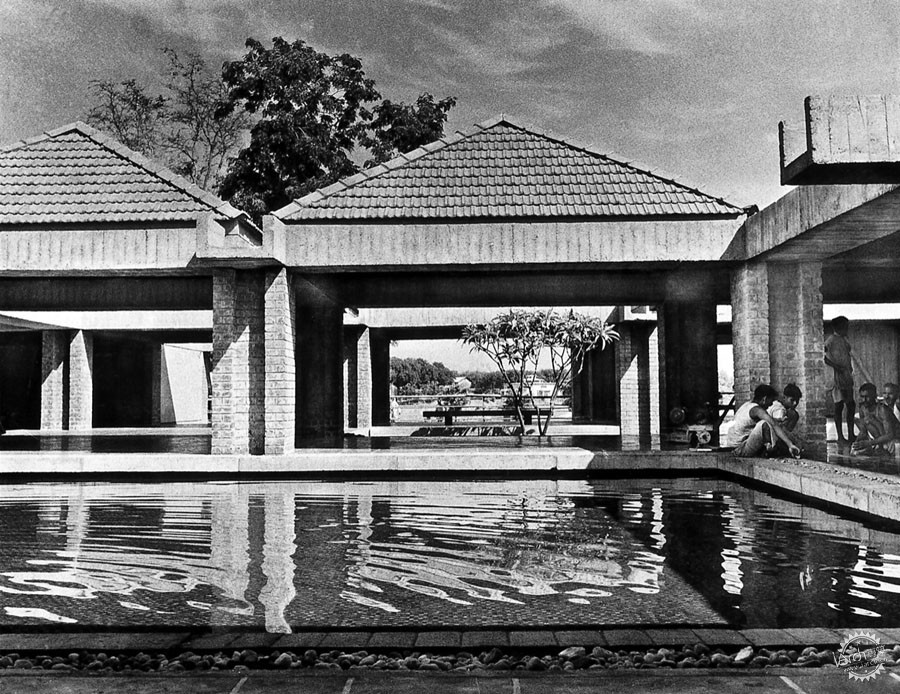
The Gandhi Ashram / Charles Correa Associates/甘地纪念馆/查尔斯•柯里亚事务所. Image © Pranal Patel. Courtesy Charles Correa Associates
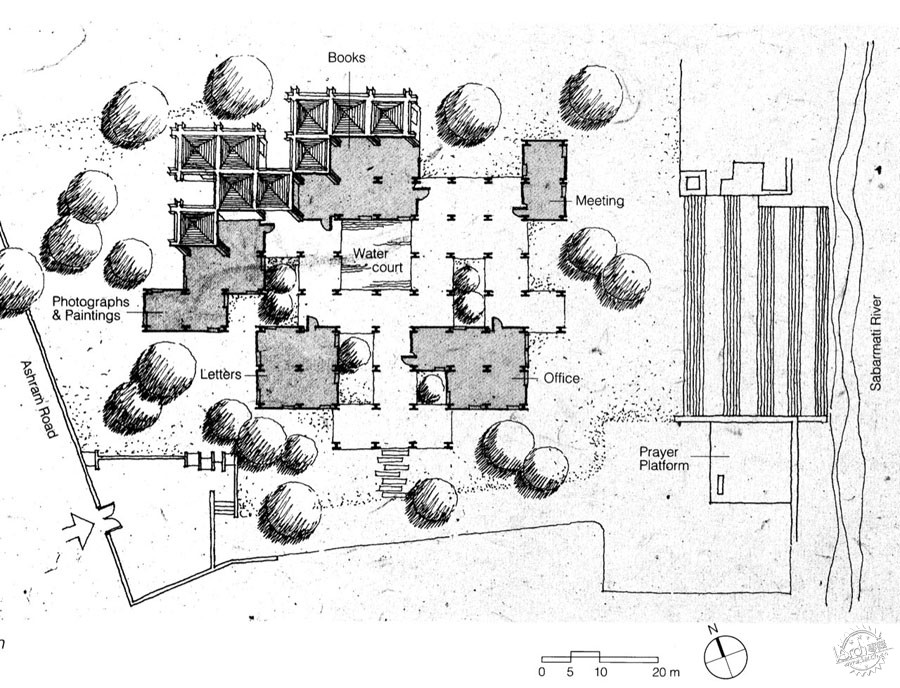
The Gandhi Ashram / Charles Correa Associates/甘地纪念馆/查尔斯•柯里亚事务所. Image © Charles Correa Associates
从柯里亚早期甚至是最著名项目——位于艾哈迈达巴德的圣雄甘地纪念馆中,我们可以看到建筑的这种特质。建于1958年到1963年的纪念馆意在表达对甘地的怀念以及保存他的思想和原则。同时,这座建筑也表达了柯里亚对本土纪念建筑的思考。
通过结合当代的建筑材料和那些甘地故居的砖瓦,柯里亚希望能在同一座建筑中表现对过去的怀念和对未来的憧憬。建筑的整体结构和现代的尺度比例可以说是对路易斯康“特伦顿浴场”的致敬。同时建筑由多个模块化的小房子连接而成,形成了时而封闭时而开放的漫步空间序列。这种空间形式在他的建筑生涯中反复使用。
柯里亚呼吁,在这个被明星建筑师和他们标志性的建筑统治的时代,建筑不应该仅仅是附属的惊叹号。城市需要新的语法。
可能是受到结构主义思潮的启发,该建筑成为了对印度传统村落运动的怀念。在一个往往晚年才能迸发精彩的实践行业中,柯里亚仅仅在28岁就设计出了甘地纪念馆,这也使他成为那个时代的少年奇才。而这个建筑中所使用的多重路径和对天开放的空间形式也被他之后的种种设计采用,包括日本奥斯卡的未建成的印度亭子、博帕尔巴韦夫妇住宅等。
This duality can be seen in one of Correa’s earliest and perhaps best-known projects: the Gandhi Smarak Sangrahalaya in Ahmedabad. Built between 1958 and 1963 as a memorial to Mahatma Gandhi the building is designed to embody Gandhi’s ideas and principles. It also displays Correa’s lateral thinking as a designer.
By combining contemporary materials with those used in Gandhi’s own house, Correa was able to look to the past and and to the future in the same expressive gesture. The entire structure, modest in scale and proportions, recalls Louis Kahn’s Trenton Bath House and consists of interconnected modular square huts that form a meandering pathway, sometimes through closed spaces and sometimes open to the sky; a feature that recurred throughout his career.
In an era dominated by the “starchitects” and their iconic structures, architecture, Correa claimed, cannot be mere “adjectives and exclamation marks.” Cities need grammar.
Most likely inspired in part by the ideas of Structuralism, the building is in many ways reminiscent of the sorts of casual movement one encounters in a typical Indian village. In a profession where practitioners generally blossom late in their careers, Correa’s monument to Gandhi—designed when he was only 28 years old—stands out as the work of a child prodigy. Its use of multiple pathways and open-to-sky space would go on to inform many of his later projects, such as the unbuilt proposal for the India Pavilion (1969) in Osaka, Japan, and Bharat Bhavan (1975-81) and Vidhan Bhavan (1980-86), both in Bhopal.
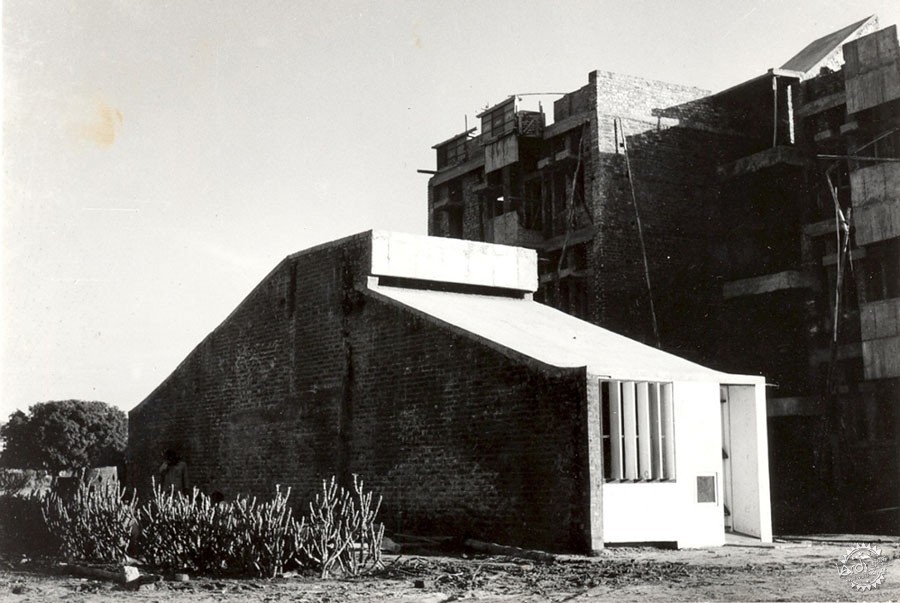
Tube House / Charles Correa Associates/立方屋/查尔斯•柯里亚事务所. Image © Charles Correa Associates
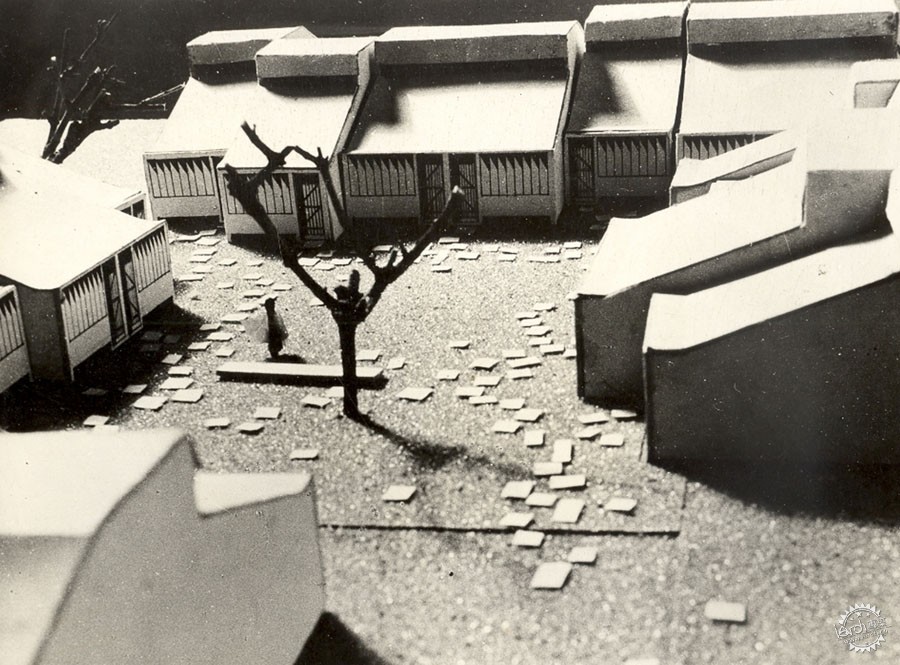
Tube House / Charles Correa Associates/立方屋/查尔斯•柯里亚事务所. Image © Charles Correa Associates
20世纪60年代,艾哈迈达巴德而非孟买继续成为实验建筑的温床。1961年,另一个种子项目以国际竞标的形式开展,目的在于设计出一种廉价住宅。由于受到巴基斯坦信德“风住宅”的启发,柯里亚发明了一种底层高密度联排住宅单元。通过设计单元的形态,这种住宅具有良好的通风性能。这座被后世称为“立方宅”的建筑成为了可持续建筑的先驱。柯里亚在这个实践案例中建立了“建筑追随气候”的信念,并在之后的设计中践行这一原则。最著名的案例包括艾哈迈达巴德的Ramkrishna住宅(1962-64)、利马PREVI实验性廉价住宅竞赛(1969)、孟买标志性的Kanchanjunga公寓。
柯里亚在印度发展的黄金期建立了他的一套建筑体系,但是由于城市畸形快速发展,他开始深刻的关注城市问题。在他生活和工作的孟买,城市的扩展速度远超建筑供应的速率,结果成片的贫民区开始占领城市。
During the 1960s it was Ahmedabad, not Mumbai, that continued to prove to be fertile ground for architectural experimentation. In 1961 another seminal project arrived in the form of an open national competition to design low-cost housing. Inspired by the wind-catcher houses that can be found in Sind in Pakistan, Correa developed a low-rise high-density arrangement of long and narrow parallel units that, through their very shape, set up a convection of natural ventilation. The Tube House, as it came to be known, spoke of sustainability long before the term became fashionable. An early example of his belief that “form follows climate,” the principles of the Tube House found their application in several other projects over the following years – most notably in the Ramkrishna House (1962-64) also in Ahmedabad, the PREVI experimental low-cost housing competition (1969) in Lima, Peru, and the iconic Kanchanjunga Apartments (1969-83) in Mumbai.
During these early formative years, while Correa was refining his architectural principles, he was also becoming deeply concerned with the haphazard growth of Indian cities. Mumbai, where he lived and worked, was growing at a rate in which demand far exceeded supply for housing. As a result, squatter colonies had started to take shape all over the city.
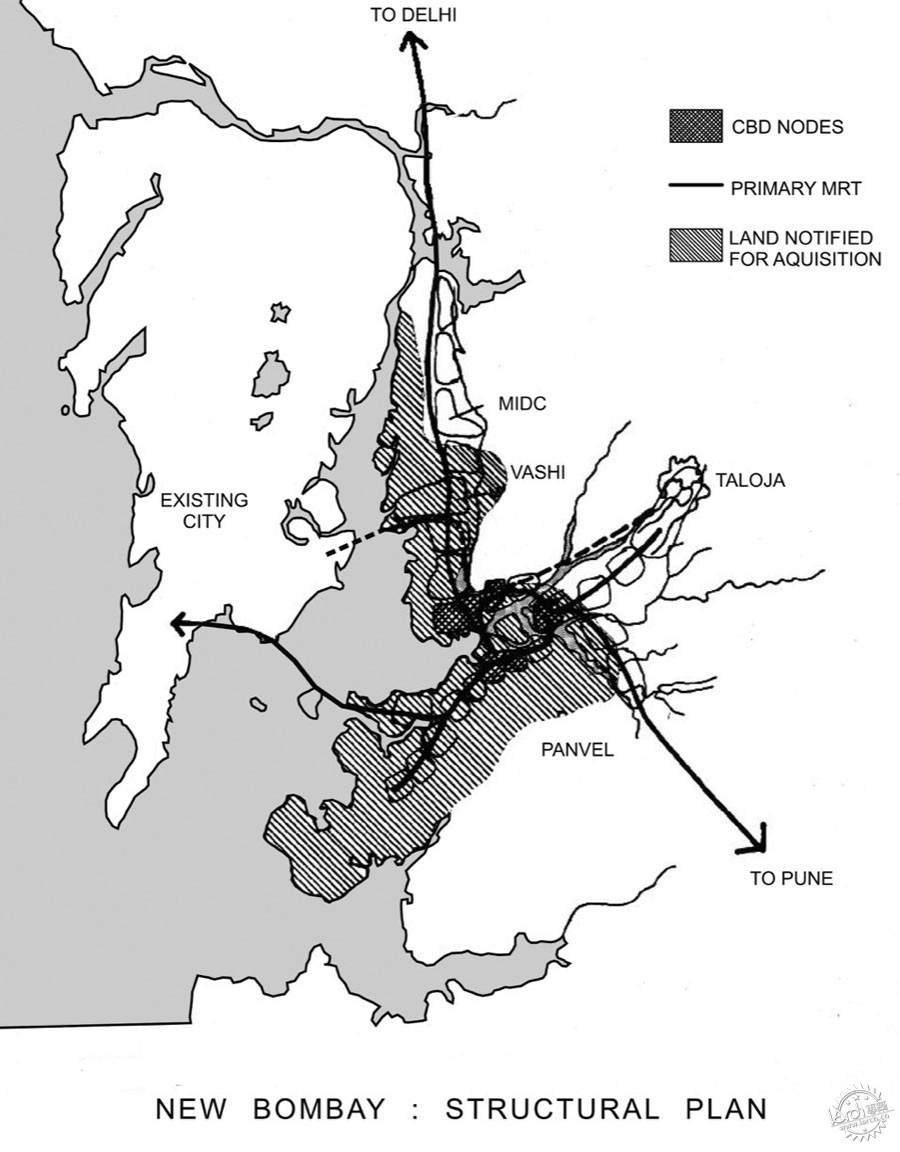
Navi Mumbai Masterplan/新孟买总平面. Image © Charles Correa Associates
由于深刻认识到建筑不可能凭空产生,柯里亚和他的同事梅塔和帕特尔开始重新规划孟买。1964年他们仅仅都只有三十多岁,便发表了一份替代规划方案,其中提出最重要的任务是营建港口区。他们的愿景被称作“新孟买”。柯里亚作为总建筑师,设计出能够容纳两百万人生存的新孟买,打破原有的城市规划格局,由原来单中心南北结构的城市转变成一个多中心城市系统的现代港湾。
柯里亚试图发展一套印度建筑语汇,这种语汇的灵感来源于这个国家神秘的宇宙哲学本身。
新孟买是上世纪最大的城市设计项目之一,同时也是柯里亚另一相对来说尺度小很多的项目的地点——柯里亚著名的贝拉坡增值住宅项目(1983)。同之前的经济适用房项目类似,该项目同样关注个人住宅空间的可塑性和使用者参与等方面。但是,不同于之前狭长的联排住宅,贝拉坡住宅包含了多种不同尺度的个人单元,并能以开放院落为中心自然生长。类似于印度传统村落,这个六公顷的项目展现了柯里亚拥有场地设计和城市形态设计的天赋,并能够在不同尺度的设计中实现公私分明的邻里空间设计。
这些设计中可以看出柯里亚设计思维的转变——渐渐拜托柯布西耶和X团队等西方设计师的影响,而开始寻求一种印度建筑的语汇。这种语汇则是受到这个古老国家神秘哲学的感染。
Understanding that housing can never be conceived in a vacuum, Correa and his colleagues Pravina Mehta and Shirish Patel set out to reconfigure Mumbai’s future growth. In 1964 the trio, all in their thirties, published an alternative plan that suggested, first and foremost, the building of a new city across the harbour. Their vision, which was accepted by the government in 1970, came to be known as Navi Mumbai (New Bombay). With Correa as its Chief Architect, Navi Mumbai was designed to accommodate two million people with the hope that it would change the pattern of growth in Mumbai’s metropolitan region from a monocentric north-south structure to a more polycentric urban system around the bay.
Correa sought to develop a vocabulary for Indian architecture that was more inspired by the deep mythic and cosmological beliefs of the country itself.
While Navi Mumbai remains one of the key large-scale urban planning projects of the last century, it is also the location for another important experiment on a much smaller scale: Correa’s famous Belapur incremental housing project of 1983. Similar to his earlier schemes for affordable housing, there is a focus on the malleability of individual dwellings and user participation. But instead of long and narrow row housing, the scheme in Belapur contains a range of different sized individual units which can grow, centered around the use of open courtyards. More akin to the layout of an Indian village, the six-hectare site showcases Correa’s skills as a site-planner and manufacturer of urban patterns, with clusters of various scales repeated to form a neighbourhood with a clear hierarchy of private and community spaces.
It was around this period in which it’s possible to notice a marked shift in Correa’s thinking. Gradually moving away from Western influences, like Corbusier and Team X, Correa sought to develop a vocabulary for Indian architecture that was more inspired by the deep mythic and cosmological beliefs of the country itself.
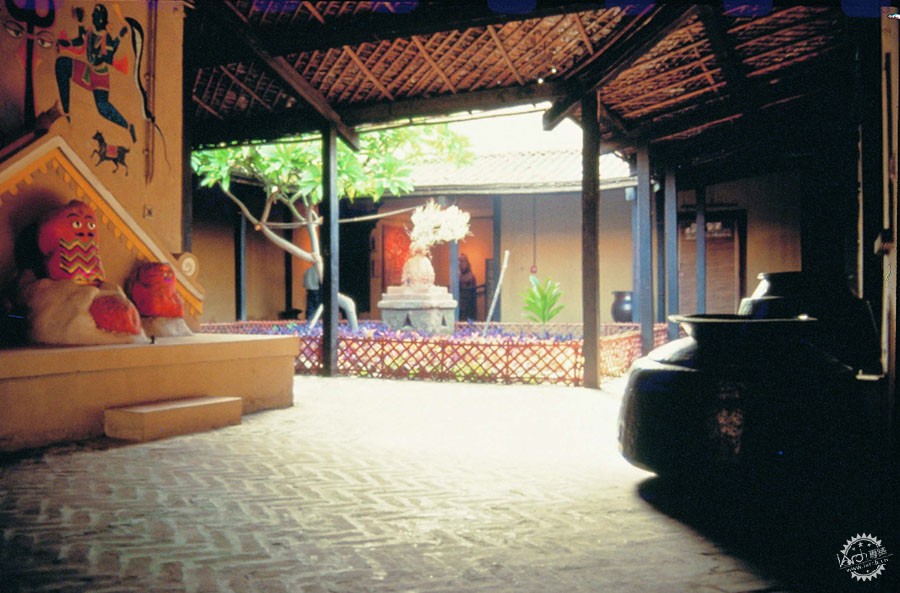
National Crafts Museum / Charles Correa Associates/国家手工博物馆/查尔斯•柯里亚事务所. Image © Rahul Mehrotra. Courtesy Charles Correa Associates
可以说作为Vistara(作为1986年印度节日一部分的建筑旅行展)策展人的经历对柯里亚建筑思维的转变起到一定推动作用。这个展览不仅仅展现了印度建筑从古至今转变的轨迹,同时展示出那先决定我们建造什么的内在信仰和想象。在之后的作品中,柯里亚有意识的摆脱明显的西式建筑的影响,包括新德里的国家手工艺博物馆(1975-1990)和斋普尔的Javahar Kala Kendra(1986-1992)。取而代之的是,就像印度南部令人震撼的寺庙一样,在对天开放的步道中的体验决定了这两个博物馆的基本基调。但是,这两个设计都覆有一层文化主题,因此传统材料的使用以及对古代标志的借鉴使得它们在印度建筑中独树一帜。不论是谁都不否认,柯里亚建筑生涯第二个阶段的主题是“批判”。普遍认为,柯里亚对过去的深刻理解以及对现在的影响,毫无疑问将推进对印度国家个性的发掘过程。
This was partly due to his involvement as the curator of Vistara – a travelling exhibition of Indian architecture organized as a part of the Festival of India in 1986. The exhibition not only traced the trajectory of Indian architecture from its ancient origins to the present day but also showed, at each step, the beliefs and mythic imageries that determine what we build. In Correa’s work that followed, seen in both the National Crafts Museum built in New Delhi (1975-90), and the Jawahar Kala Kendra in Jaipur (1986-92), there was a conscious attempt to break away from any obvious Western influences. Instead, like the incredible temples of South India, a movement through open-to-sky pathways determines the layout of both museums. But it was the overlay of cultural motifs, use of traditional materials, and references to ancient symbols that made these projects stand out as examples of what Indian architecture could be. Whether one agrees with this second period in Correa’s work is, of course, debatable. That said, Correa’s deep understanding of both the past, and how it could inform the present, undoubtedly pushed forward the discourse on national Indian identity.
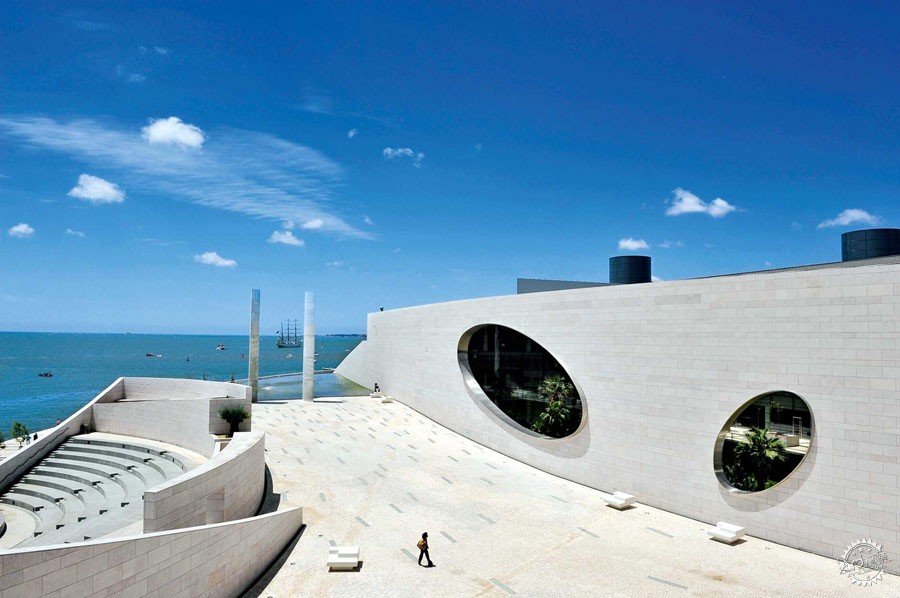
Champalimaud Center / Charles Correa Associates/尚帕里陌中心/查尔斯•柯里亚事务所. Image © Aga Khan Foundation
在印度从社会主义走向自由民主的阶段,柯里亚已经成为印度建筑业的领军人物。随着名气和认可度的积累,他逐渐获得了许多在国外设计的机会。他最后的三个著名项目都在海外,这些设计打破了人们对其设计的传统认知,并形成了他生涯的第三阶段。MIT的脑认知科学中心(2000-2005)、多伦多伊斯梅利中心(2000-2014)和里斯本尚帕里陌中心(2007-2010)是对抽象形体的探究但是仍然根植于当地城市肌理、气候和文化。它们以一种新的形式表达了柯里亚贯彻一生的建筑哲学。
或许,柯里亚的天才在于他能准确预言许多我们现在才面临的问题。
柯里亚的逝世留给我们许多著作以及他关于“建筑塑造社会”的启示。但是,它们同样证明了实现愿景的难度。他历史性的新孟买规划从没有获得政府完全的支持去实现这一宏伟目标。虽然他的建筑生涯异常活跃,但他的大部分作品都仅仅存在于印度,而发展中世界的众多城市的建筑依旧缺乏他那种对于城市肌理、当地材料和气候敏感。
By the time India moved from Socialism to liberalization, Correa had already established himself as the torchbearer of Indian architecture. With fame and recognition also came the chance to build abroad. His last three notable projects, all built overseas, appear to break away from some of his earlier preoccupations and embody a third and important phase in his work. The Brain and Cognitive Sciences Center at MIT (2000-05), the Ismaili Centre in Toronto (2000-14), and the Champalimaud Centre for the Unknown in Lisbon (2007-10), are all more abstract explorations but still firmly rooted in their respective contexts, climates, and cultures. They are fresh reinterpretations of some of the central concepts that had consumed his thinking and work throughout his life.
Perhaps the real genius of Charles Correa lay in his ability to foresee, rather prophetically at times, many of the problems that we face today.
Correa’s passing leaves us with a body of work and a collection of writings that stand as testament to architecture’s potential to shape society. But they are also proof of the difficulties of realizing visions. His heroic Navi Mumbai plan never garnered the full political will that was necessary to see such grand ideas through to the end. And, in spite of his life-long activism, much of what we are seeing built indiscriminately across India—and, for that matter, any major city in the developing world—is devoid of any sensitivity towards context, local materiality, and climate.
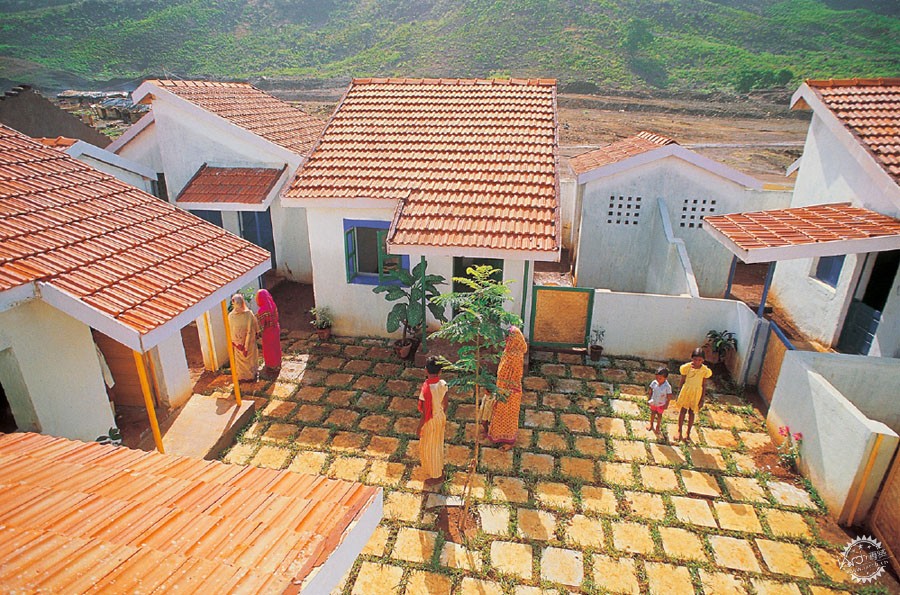
Belapur / Charles Correa Associates/贝拉坡/查尔斯•柯里亚事务所. Image © Charles Correa Associates
柯里亚呼吁,在这个被明星建筑师和他们标志性的建筑统治的时代,建筑不应该仅仅是附属的惊叹号。城市需要新的语法。在这样一个信息时代,柯里亚摆脱意像的束缚,毅然转向对空间组织和使用的研究。他设计的平面不仅仅是平面构成,而是企图创造一个社区。就像莱特之于美国,阿尔托之于芬兰,默科特之于澳大利亚,柯里亚创造了一种印度新的生活方式。
In an era dominated by the “starchitects” and their iconic structures, architecture, Correa claimed, cannot be mere “adjectives and exclamation marks.” Cities need grammar. In today’s media-savvy world, Correa stayed away from imagery and chose instead to focus on intelligent organization and use of space. His plans were not just compositions but attempts to create community. Like Frank Lloyd Wright in the USA, Alvar Aalto in Finland, and Glenn Murcutt in Australia, Correa invented ways in which Indians could live.
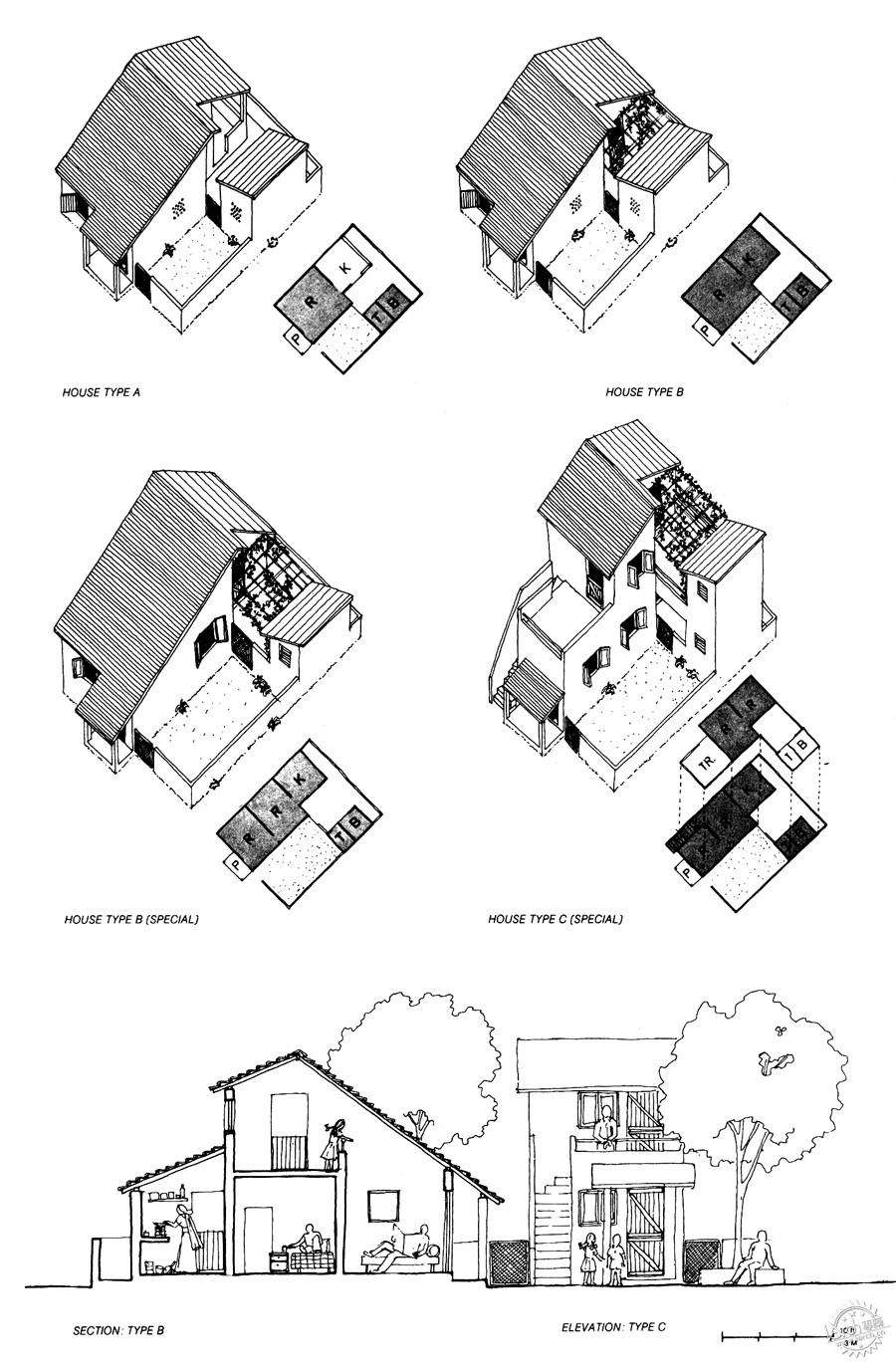
Belapur / Charles Correa Associates/贝拉坡/查尔斯•柯里亚事务所. Image © Charles Correa Associates
或许,柯里亚的天才在于他能准确预言许多我们现在才面临的问题。他同时能够提出一种看似简单但超前于同时代的解决方式。罗伯特•伊芙(《建筑评论》的前编辑)曾经评价道:他是一个常理中的非常理”。随着世界城市人口可能在2050年翻番,我们这个世界应该有更多柯里亚式的“常理”存在。
作者信息:Rohan Varma 实践建筑师,工作和生活在印度孟买和荷兰代尔夫特。曾于2008年到2010年为柯里亚工作,并且协助他完成最后一本书《阴影之下:新景观和其他》
But perhaps the real genius of Charles Correa lay in his ability to foresee, rather prophetically at times, many of the problems that we face today. He also was able to provide solutions that were ahead of their time, yet deceptively simple. Robert Ivy, a former Editor of the Architectural Review, once remarked that he was “a man of uncommon common sense.” With the world’s urban population expected to double between now and 2050 we can only hope that common sense, like Correa’s, prevails.
Rohan Varma is a practicing architect living and working in Mumbai, India, and Delft, The Netherlands. Between 2008 and 2010, he worked in the office of Charles Correa, and also assisted him on his last book A Place in the Shade: The New Landscape & Other Essays.
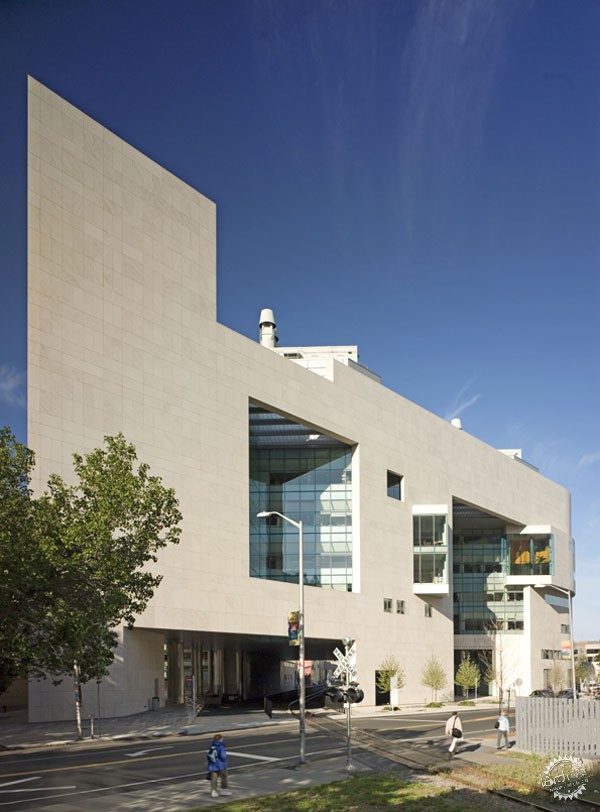
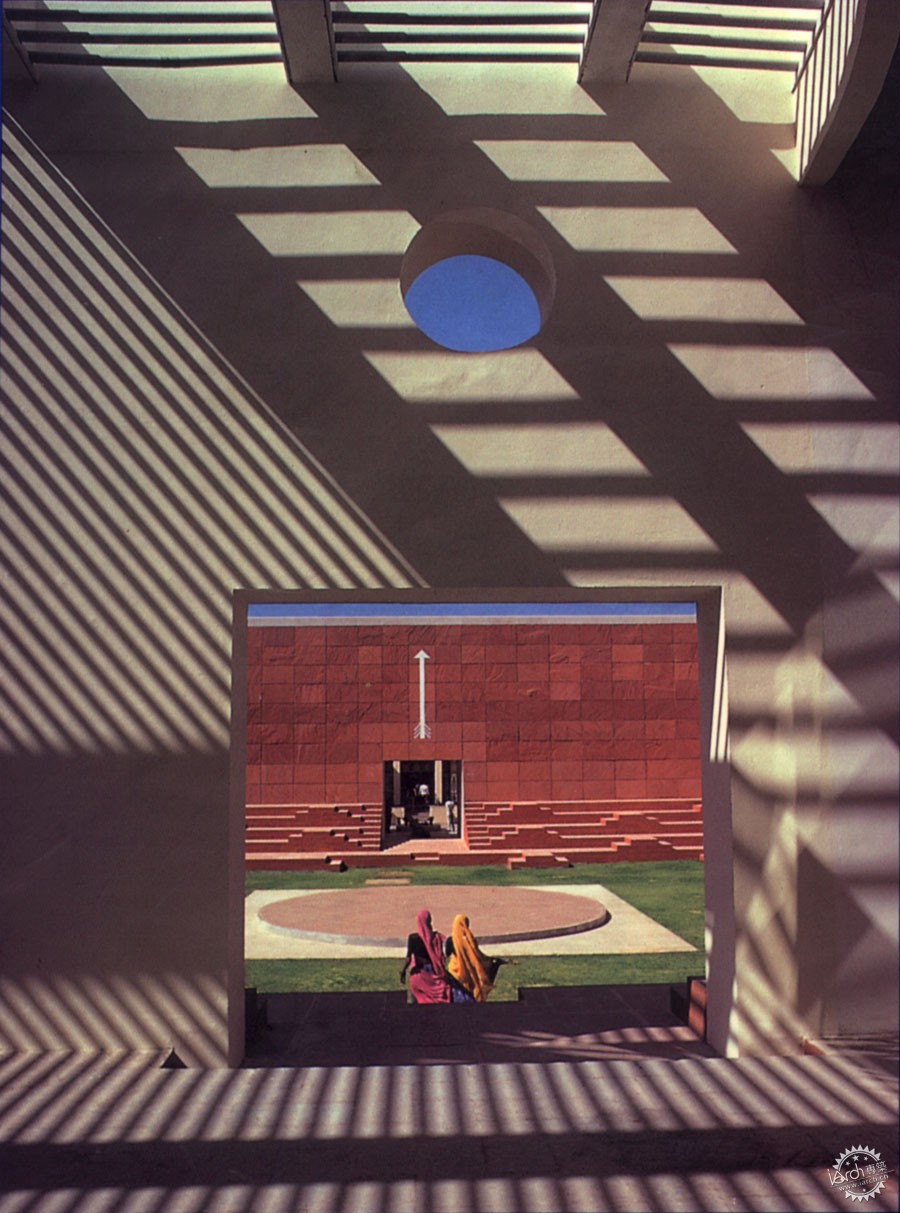

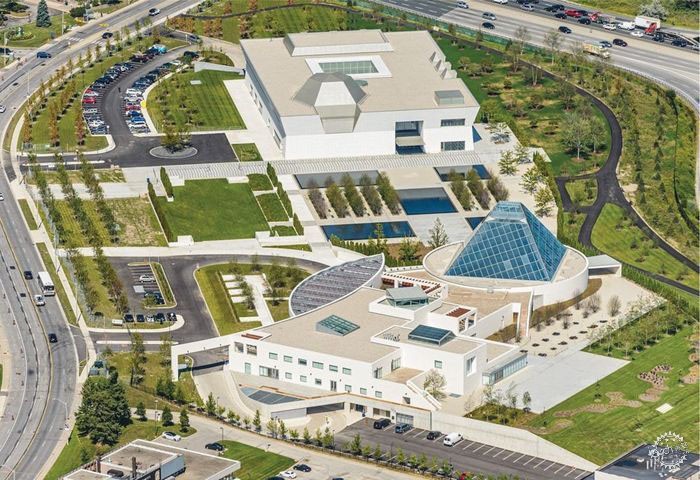
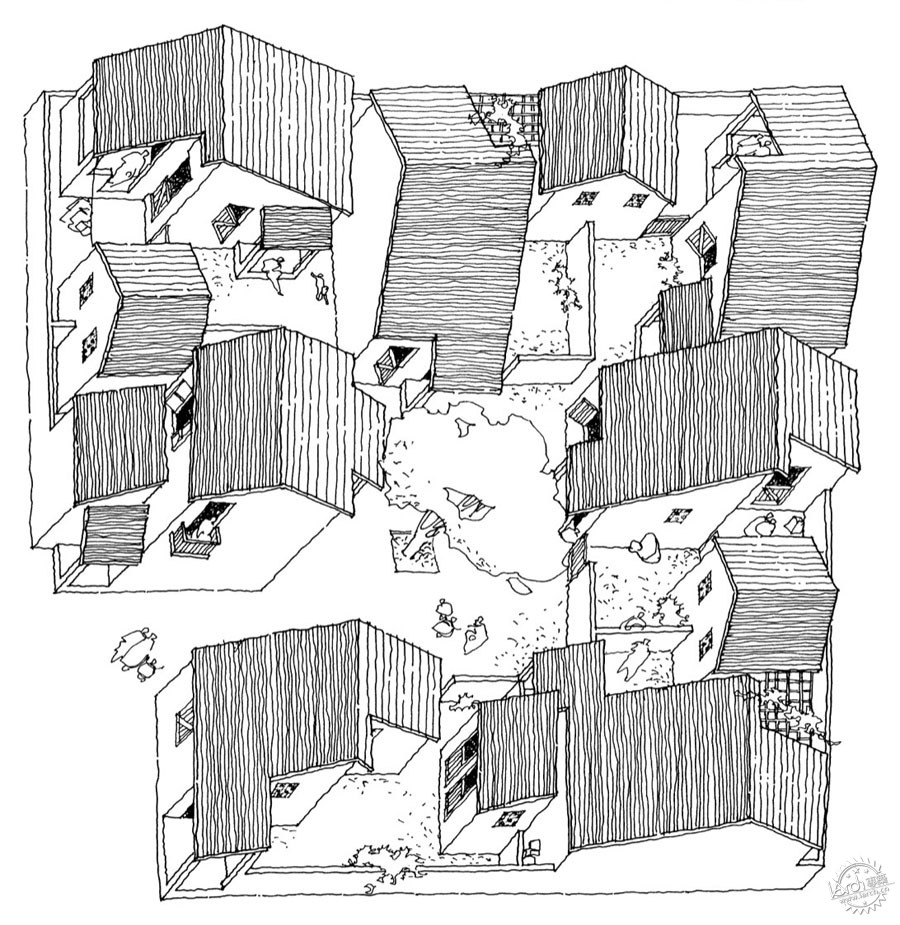
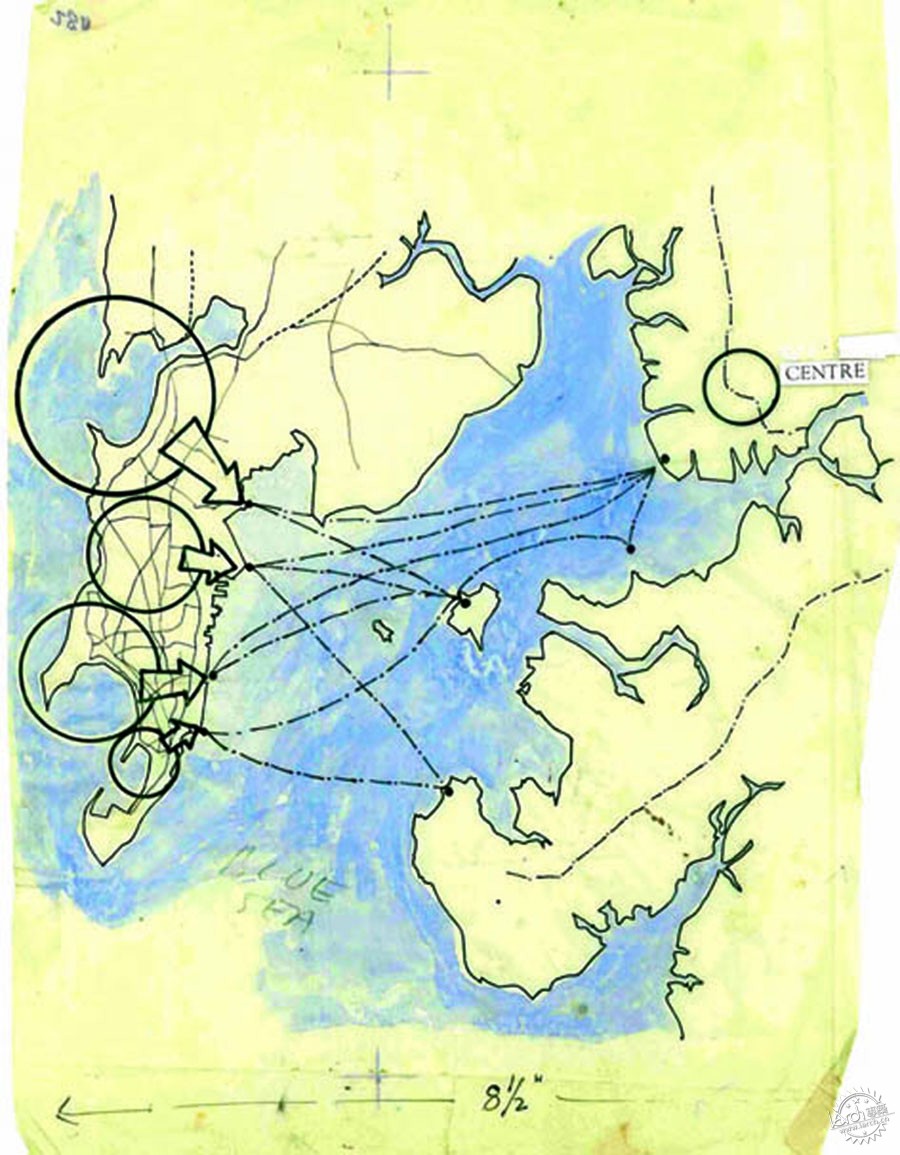
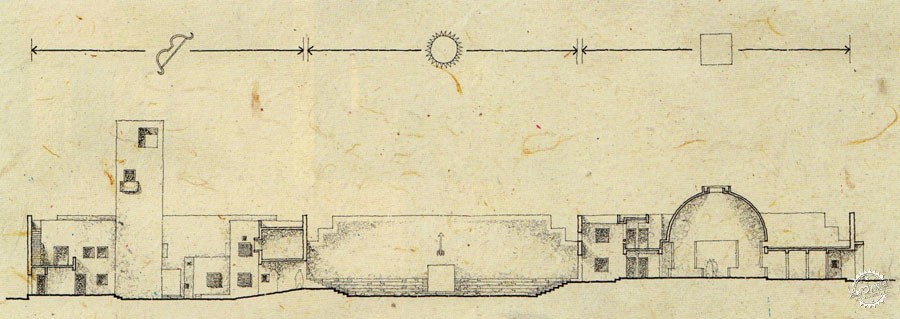
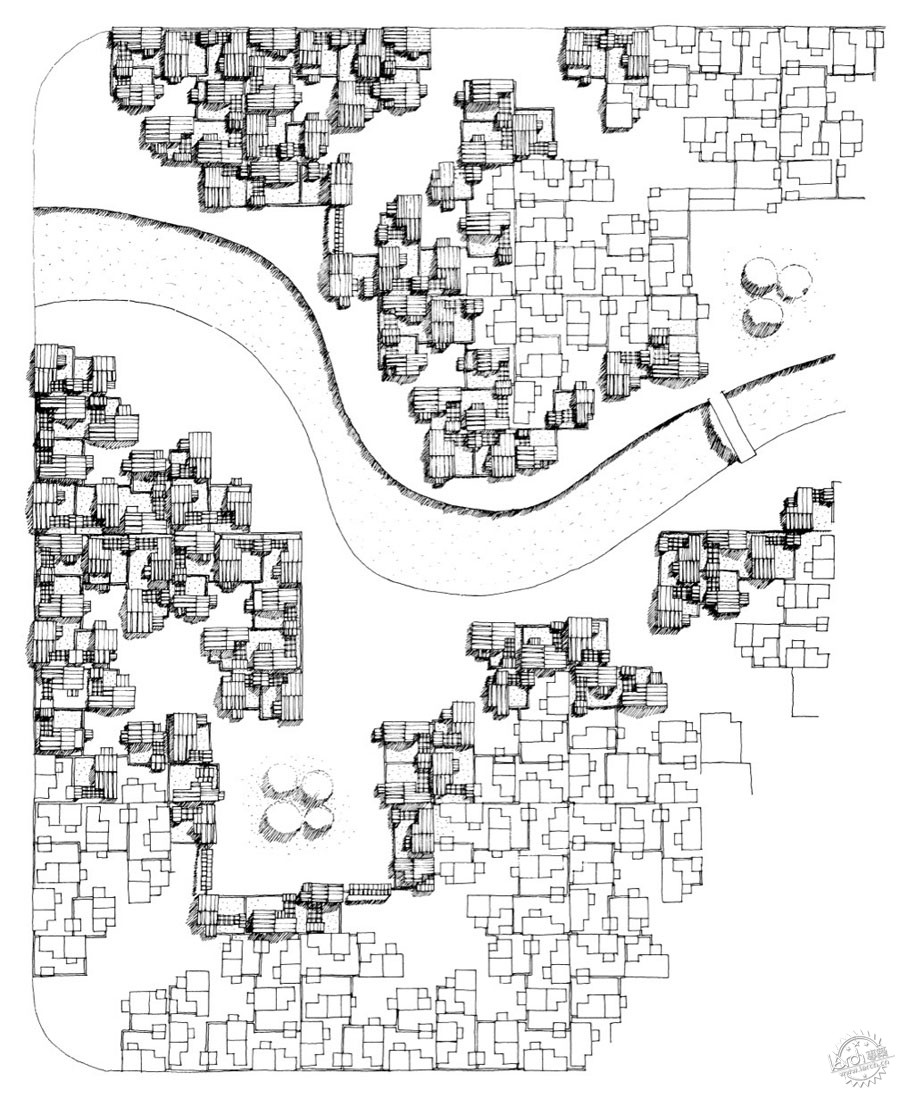
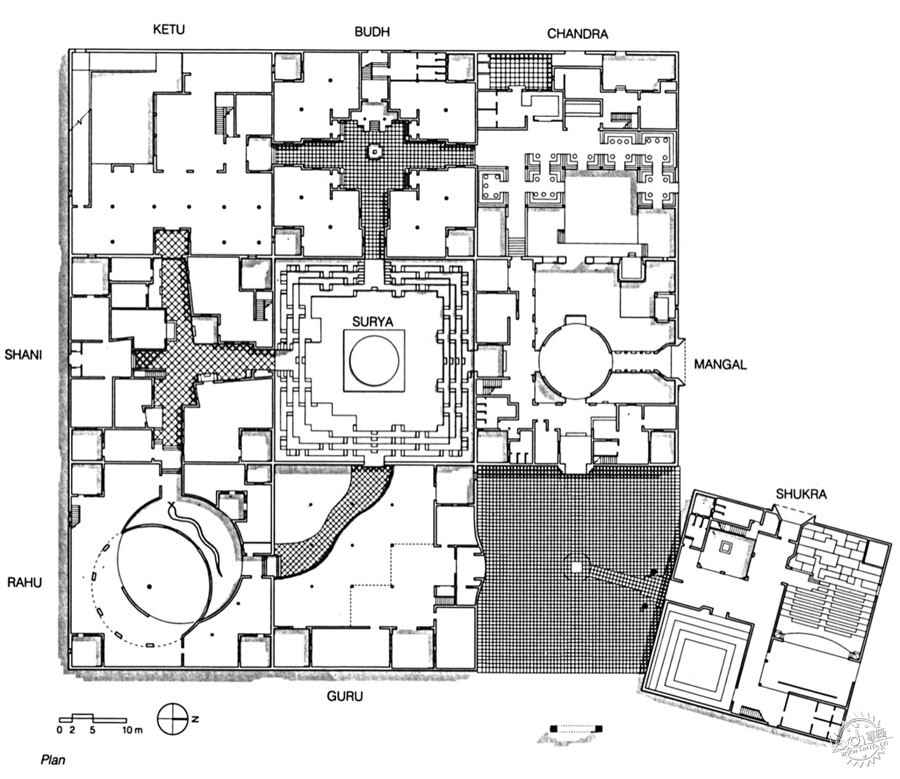
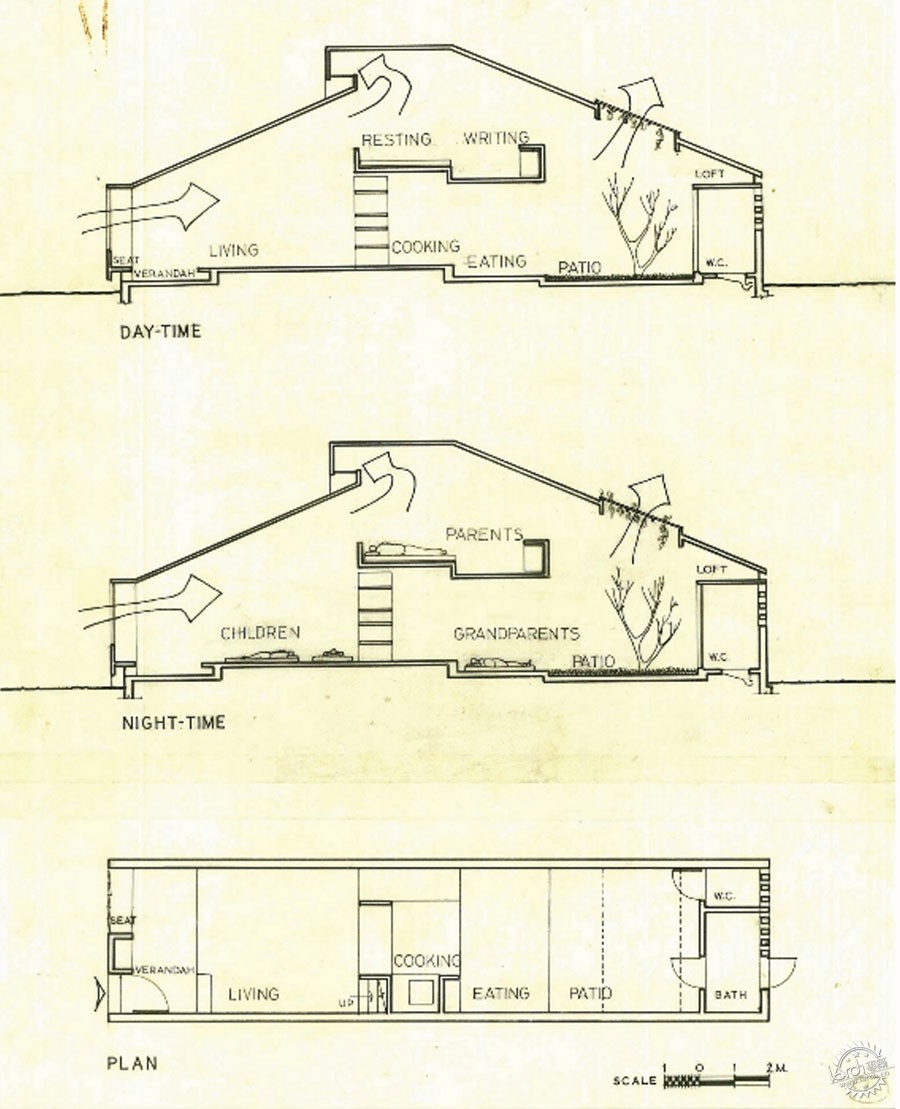
出处:本文译自www.archdaily.com/,转载请注明出处。
|
|
